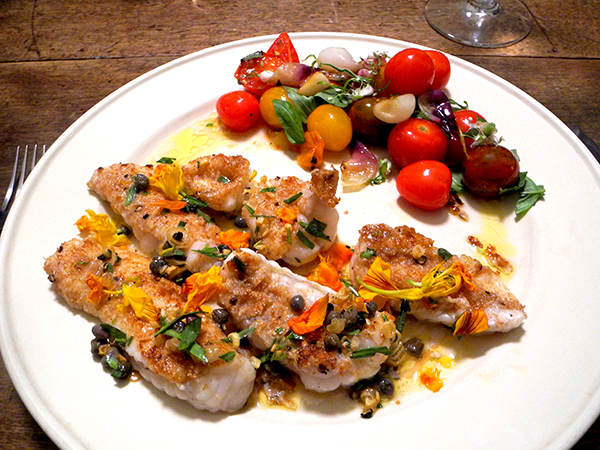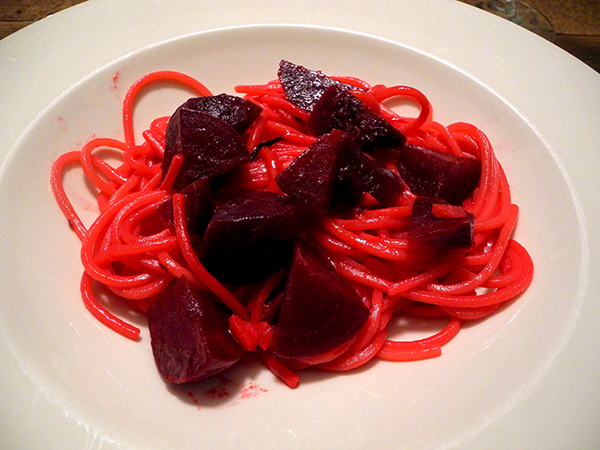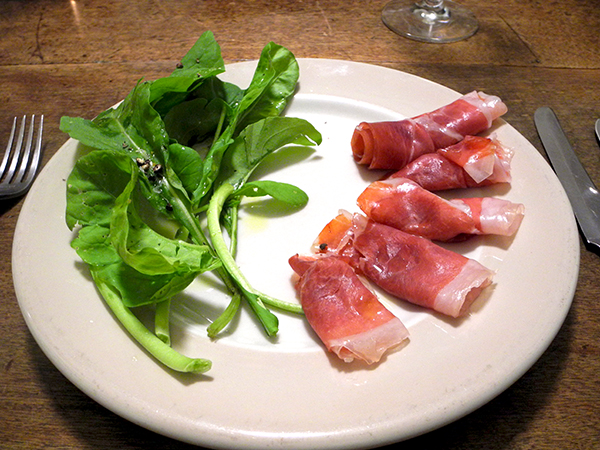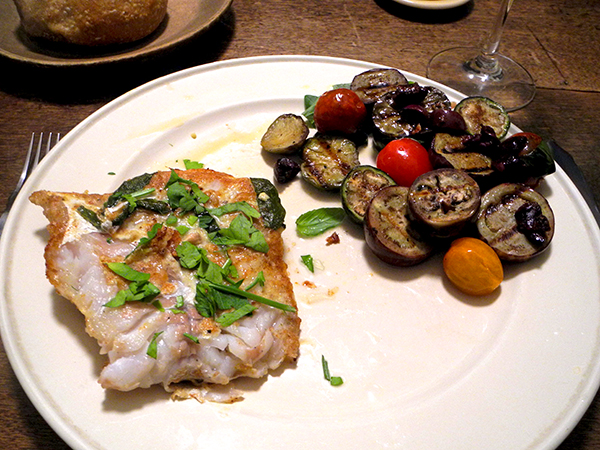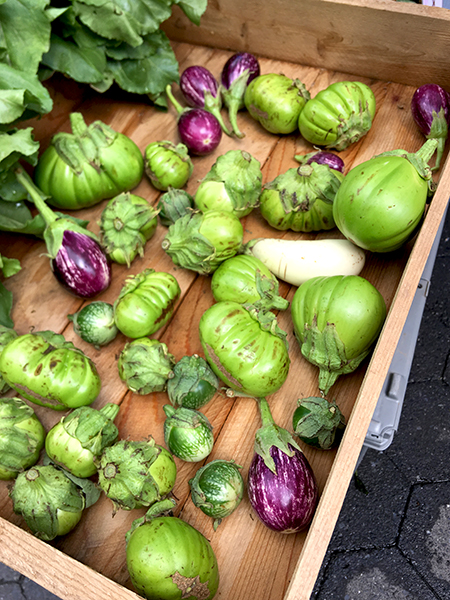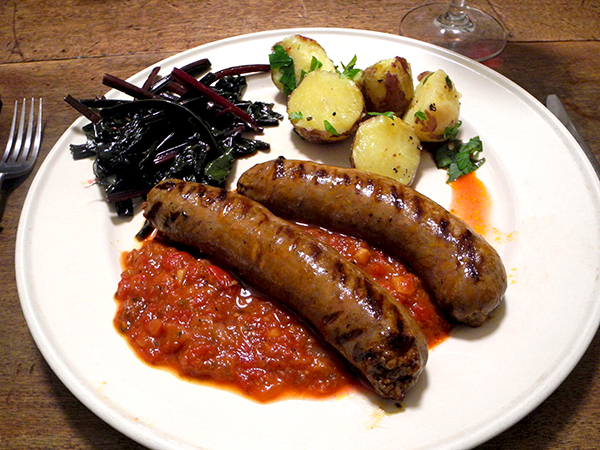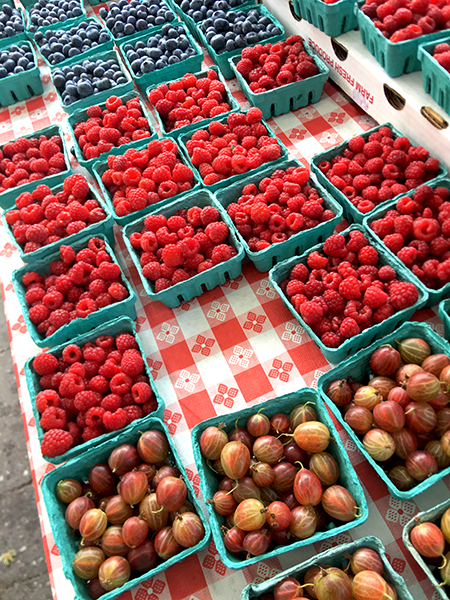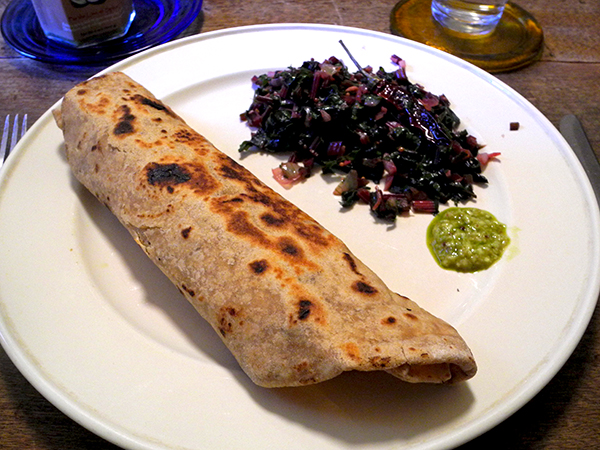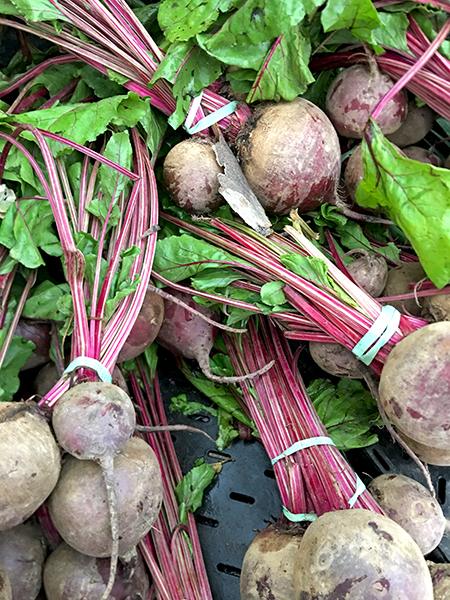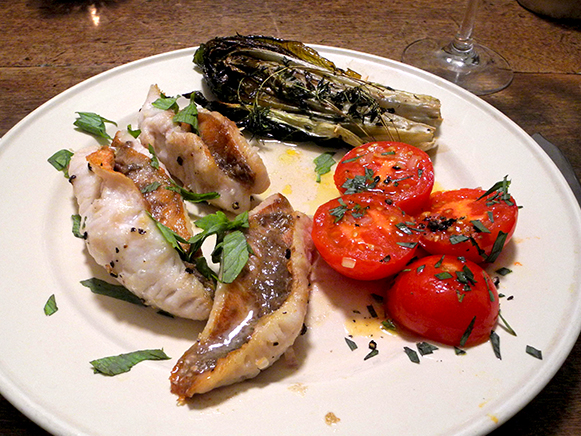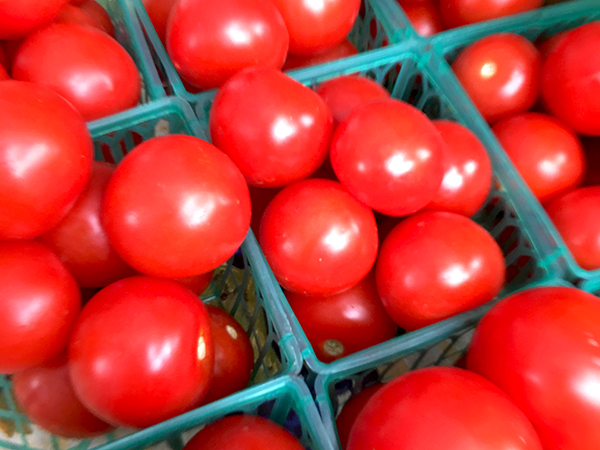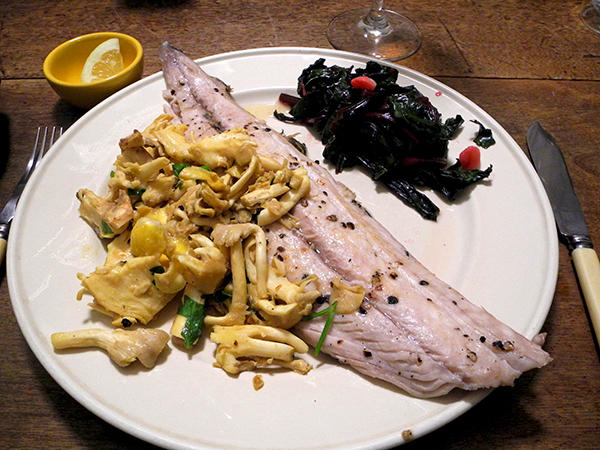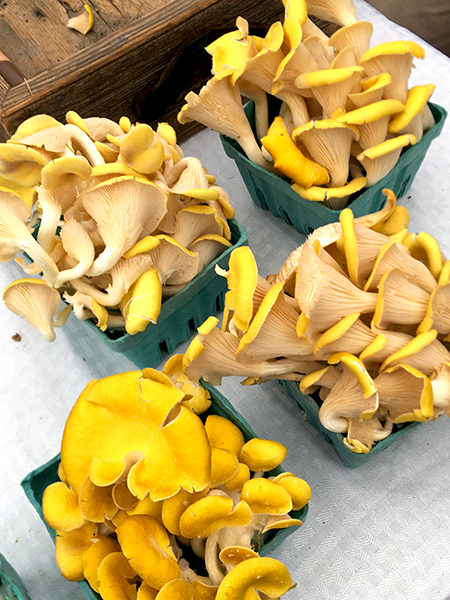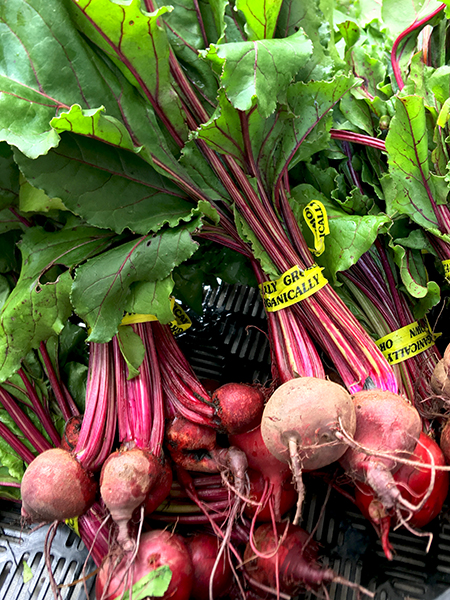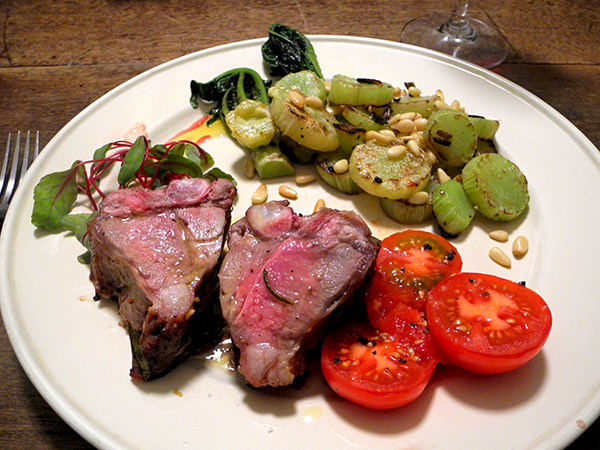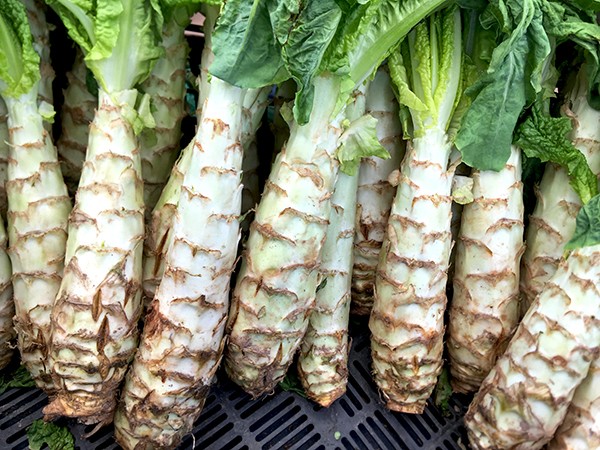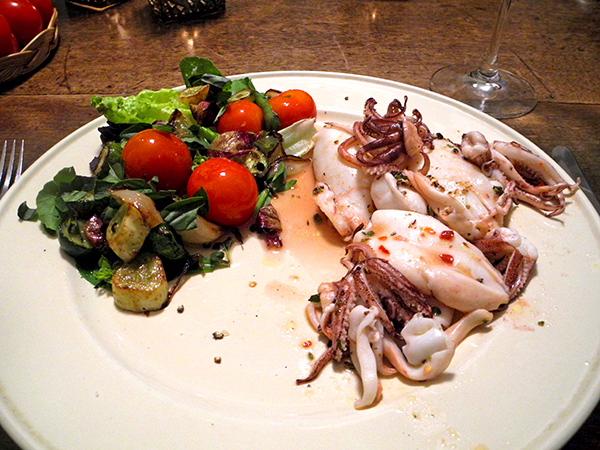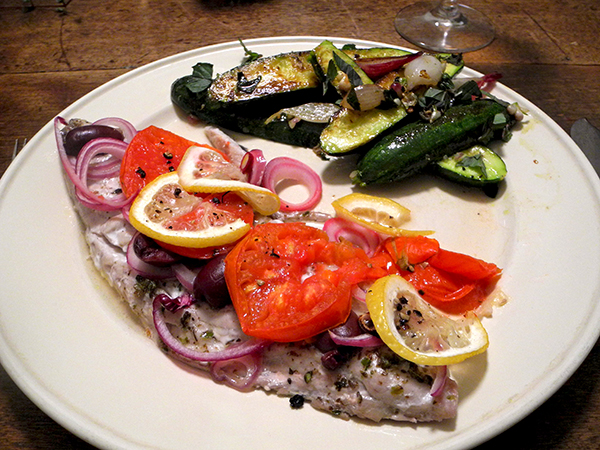
[If the fish looks like a fishing boat, it’s pure chance, and not a cute conceit of the cook.]
The recipe for this dish, which almost never happened, at least in my kitchen, produced the best bluefish I have ever tasted – or looked at.
The fillets were obviously very, very fresh on Friday (more even than most seafood generally, bluefish, like mackerel, must be absolutely fresh because of its high oil content), and my fish seller pointed to them even before I looked like I might welcome some curation.
Once at home however, after looking for a recipe I could get excited about and wouldn’t require much time – especially oven time – I realized I didn’t have anything that I could get excited about. Then I found a loose paper with the heading, ‘BLUEFISH FILETS GREEK STYLE’ above a list of really refreshing ingredients that seemed to scream ‘summer’, and a pretty sketchy description of the procedure that was supposed to do the trick. I knew I could still work with it, and while the oven was involved, it would only be for about 15 minutes (an estimate, not in the recipe, but gleaned from bluefish recipes that had already appeared on my own blog).
Today I searched on line for the origin of a recipe I now cannot praise enough. I found it inside a discussion on Chowhound, where it had appeared 5 years ago, under ‘Great Bluefish recipes?’, as only a friendly recommendation, delivered in a short narrative, more than a proper formula. The contributor was Bacardi1.
I bow to Bacardi1, and thank her for a great meal, and presumably many more to come.
This is what the fish looked like inside the pan, with its intimate accompaniments, just before going into the oven.
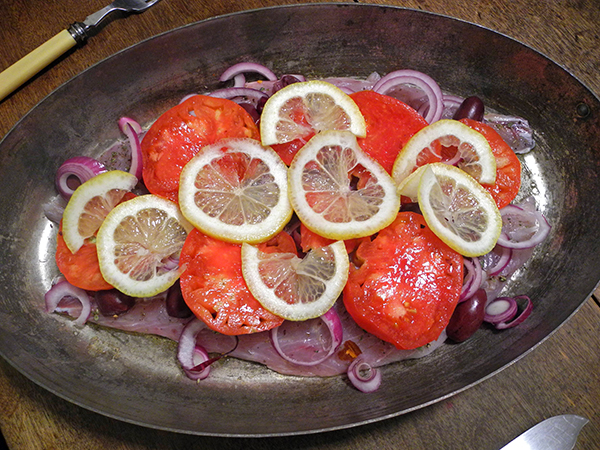
Fortunately I had picked up a couple of fantastic heirloom tomatoes the same afternoon that I found the bluefish; they were the first of the season, at least at the stand of one of my favorite farmers, and one of them was perfectly ripe for joining the 2 fillets.
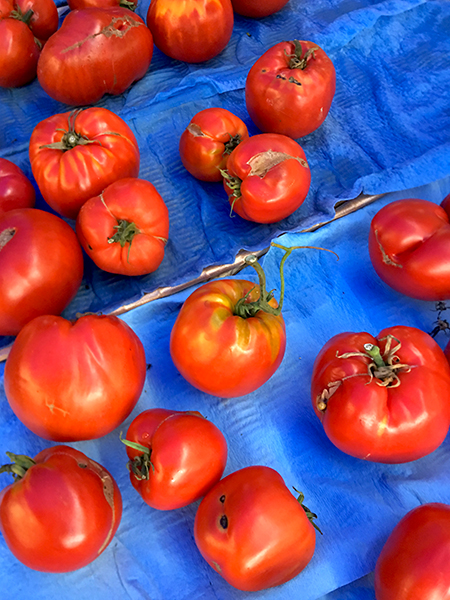
The side dish was built around a generous amount of baby zucchini, which may also have been the first of the summer, again, at least first for the farmer offering them. Normally I would pan grill these sweet summer squash, but it was late by the time I had sorted out what I was going to do with the fish, so in order to save time I halved them lengthwise and sautéed them with a very few small spring onions until they had begun to caramelize, producing much the same effect, and at least as much taste, as the grill would have.
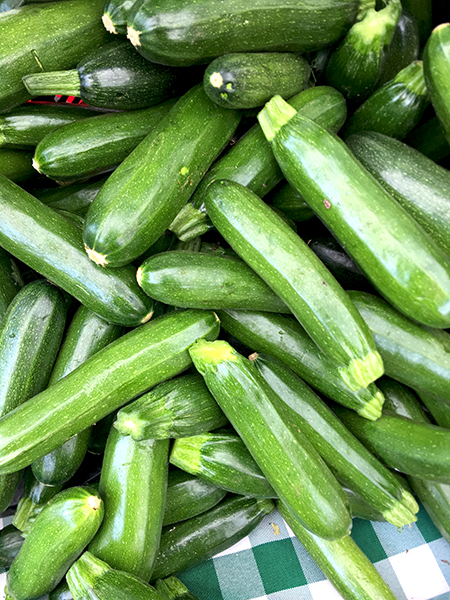
And, confirming once again that New Yorkers are blessed with all kinds of food ‘extras’, there were garlic flowers, both for their flavor and for their aesthetic, as a garnish on top of the vegetables.

- two bluefish fillets (1.04 pounds) from Pura Vida Seafood; sherry vinegar; dried wild Sicilian oregano from Buon Italia; dried peperoncino Calabresi secchi, also from Buon Italia; one small red onion from Norwich Meadows Farm; one thinly-sliced ripe heirloom tomato, also from Norwich Meadows Farm; 8 or so Kalamata olives, pitted and halved, from Whole Foods Market; and slices of an organic lemon, also from Whole Foods Market, the ingredients used in preparing a dish using this description, mostly, by the author of the recipe [noting that I cooked the dish inside a tin-lined oval copper gratin pan for 15 minutes]:
My favorite way of preparing nice Bluefish filets (when I can get them) is “Greek” style. I rub the filets with extra-virgin olive oil & a dash of red wine vinegar, sprinkle liberally with dried oregano & some crushed red pepper flakes, & then cover with thinly sliced red onion, thinly sliced tomato, crumbled feta cheese, chopped fresh oregano if available, & thinly sliced lemon. Sometimes I’ll add some pitted chopped Kalamata olives as well. I then bake until done.
- baby zucchini from Berried Treasures, halved, sautéed, along with 3 halved red spring onions from Alewife Farm (the 3 were all I had left in the crisper last night) inside a very large seasoned cast iron pan, turning zucchini and onions once, until they had begun to caramelize on all sides (the onions having to be removed earlier, since they cook faster), seasoned with sea salt and freshly-ground Tellicherry pepper, tossed with a generous amount of peppermint, chopped, from Berried Treasures Farm, finished with chopped garlic flowers from Windfall Farms and a drizzle of olive oil
- the wine was a French (Bordeaux) rosé, Château de Fontenille Rosé Bordeaux 2016, from Chelsea Wine Vault
- the music was the album, ‘Rameau’s ‘Pièces De Clavecin En Concerts’, five suites published by Jean-Philippe Rameau in 1741, performed here by Kaori Uemura, Christophe Rousset, and Ryo Terakado
